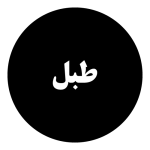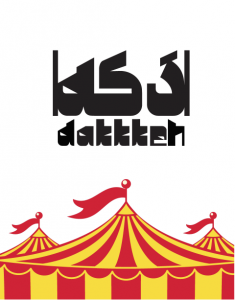First Season
Issue 07
Cold War – Life Style
December 2021
Content
– Soviet Civilization through a Persian Lens
James Pickette
– Walking the Tightrope
Lana Ravandi-Fadai
– Conceiving Citizens
Mohammad Sarvizargar
– Iranian Education from the American Shore
Matthew Shannon
– Global Exchanges: Cold War and the Meaning of Islamic Architecture in the Contemporary Era
Ali Mozzafari
– Plan of a Revolution: an Undone Project for Tehran
Hamed Khosravi
– Photo and Illustration in Children and Young Adult Literature in the Battlefield of the Cold War
M. Tari
– Iranian Jazz and Pop Music
An interview with Mir Alireza Miralinaghi
– Charities and Charity Organizations in Iran during the Cold War
Masood Kouhestani-nejad
– The Cold war with Coca-Cola Taste
Shahram Ahmadian
– Left and Fashion
Javad Hasanjani
– The Impact of the Cold War on the Lives of Armenians in Iran
Robert Safarian
Abstract
The seventh issue of Tabl magazine, published in December 2021 with eleven articles and one interview, explores the Iranian lifestyle during the Cold War.
During World War II and its immediate aftermath, the Soviet All-Union Society for Cultural Relations with Foreign Countries (VOKS) engaged in an aggressive campaign of cultural outreach in Iran to promote socialist modernity amongst Iranian leftists, who were agents of VOKS’ serious expansion outside Europe. VOKS’ funds were spent for establishing the Iranian Society for Cultural Relations with the USSR. Iranian intellectuals served as evidence of the abundant possibilities for a specifically Persianate articulation of socialist modernity. In his article “Soviet Civilization through a Persian Lens,” James Pickette uses both Russian archival sources and Persian-language periodicals and interview transcripts to explore this unique confluence of Soviet and Iranian ambitions and Cultural Societies’ influence as the cultural and political mission of the Societ Union and as a national project, along with studying “Iranian intellectuals,” Cultural Diplomacy and Socialist Modernity during 1941-55.
Coinciding the 60th anniversary of Mossadegh’s fall on August 19th, 2013, the Archives and Records Administration of the National Security Agency of the United States released documents showing the United State’s involvement in the 1953 coup d’etat. The involvement of the US and Britain is also demonstrated in other documents released since 1953. With studying released documents, in “Walking the Tightrope,” Lana Ravandi-Fadai explores the Central Intelligence Agency’s involvement in the fall of Mossadegh. Some of these articles are the records of the CIA in 1954, Battle for Iran, Long Live The King!, Britain documents, Maps, and other documents that were directly relevant to the coup d’etat and have been recently released .
In 2011, Firoozeh Kashani-Sabet published Conceiving Citizens: Women and the Politics of Motherhood in Iran that is independently focused in 20th-century Iran. The main argument of the book is the question of “motherhood” in the contemporary history of Iran: What was the meaning of motherhood, how, in the process of its development, has it been tied with nationalism and Patriotism, and according to these concepts and framings, what specific public politics have been forced on women’s bodies?
Along with a general introduction of different parts of the book, Mohammad Sarvi-Zargar reports a part of the book that studies women during the Cold War international conflicts at their peak.
In “Iranian Education from the American Shore,” Matthew Shannon, a member of the Historical International Relations of the US, studies a number of writings and researches about education in Iran, from the announcement of the Point Four Program until the integration of education in Shah’s White Revolution. The main sources of this article are the published books and articles, as well as archival sources to study how American educational systems integrated with the Iranian educational system during the final years of Shah’s reign. Other subjects carried out in this study are the decade of implementation of the Point Four Program, the Applied Sociology and the White Revolution, and James Glenn Beall vs. Marvin Zonis.
One of the apparent characteristics of architectural evolution in Muslim countries in the 20th-century is the emergence of a new type of architecture called “Islamic Architecture” that attempted to find solutions for the modern conditions of today’s world. This Islamic Architecture, however, comprises complicated historical, political, and social relations under the cover of Islam. Ali Mozzafari in his article “Global Exchanges: Cold War and the Meaning of Islamic Architecture in the Contemporary era” studies these relations and seeks to clarify the characteristics of Islamic Architecture in our time. In other words, he looks for the origins of what has been recognized as Islamic in architectural productions.
In his article “the Plan of a Revolution: an Undone Project for Tehran,” Hamed Khosravi reviews the common mission of the East German Democratic Government and the Soviet Union, from 1955 to 1977. This mission was a research project on theoretical principles of Socialist Architecture, the aim of which was the internal transformation of the capitalist world. This project was carried out with the help of architecture and design principles, with an emphasis on the determinative role of residential spaces. Despite the failure of this project, which was due to the political circumstances of the two countries, many of “Socialist Architectural Principals” were experimented with and implemented among the process of research in target countries, including Iran, that ultimately changed the lifestyle of the middle and working classes.
In contrast to a written text, an image has a more extensive and permanent function in communicating meaning with the audience’s mind. Therefore, with a cultural investment, two parties of the Cold War enjoyed children and youth illustration as a means of propaganda for their cultural works. In this regard, they tried to execute various projects in cultural societies and publish various publications. With bringing examples of the works of cultural societies from 1946 to 1953, Koohestani-nejadi, in “Photo and Illustration in Children and Young Adult Literature in the Battlefield of the Cold War,” studies what the two players of the Cold War pursued in this regard.
In a conversation, Alireza Miralinaghi discusses pop and jazz music in Iran. For him, foreign countries, especially the United States, hardly ever launched a musical genre in Iran. Any possible change in the music of different Iranian cities, influenced by western countries, was merely technical, and in the end, the same old tradition was saved. In this regard, however, Tehran was different. He reviews the emergence and development of Iranian pop and jazz in Tehran which were affected by a change in the lifestyle and the consumption pattern, the emergence of the media, and forming the middle working class.
During World War II, when Iran was occupied by the Allies, both the western bloc and the Soviet Union established charity associations in Iran. For Koohestani-Nejad, the function of these charities and relief operations was dependent on the governing policies in the Cold War conflict. In “charities and charity organizations in Iran during the cold war,” the function of the Soviet Union, western bloc and the United States, and also Iranian government is discussed and reviewed.
Coca-Cola is the symbol of American identity. In political conflicts, the dismissal of an American ambassador happens along with the prohibition of Coca-Cola in the same country. The development and position of this brand are certainly dependent on the development of the world of advertisements. Shahram Ahmadian considers it essential to review the cultural and social functions of the symbolical aspects of this brand in American culture, in studying cultural conflicts of the Cold War and the ways of extending American values. In “The Cold war with Coca-Cola Taste,” he tries to portray the United States with the help of advertisements of Coca-Cola in Iranian publications, from the 40s until the 70s.
Clothing is either a reflection of or a reaction to a historical situation. Since the late 40s, the middle class in Iran accepted western clothing. For Javad Hassanjani, on the other hand, clothing is a sign of protest. Since 1934, after the turmoil of Unveiling (a decree issued by Reza Shah), a street-based conflict started between western civilization and Iranian individuals. In “Left and Fashion,” the social aspect of clothing and the influence of the leftists on fashion, as it has been examined by its opponents, has been studied.
An article written by Robert Safarian examines the “impact of the Cold War on the lives of Armenians in Iran.” To this end, Safarian addresses the consequences of the Cold War reflected in issues such as “Nergaght” (Repatriation) or the mass migration of Iranian Armenians to Soviet Armenia; “Radio Yerevan,” which was one of the ways to preserve Armenian culture; “Sako Bookstore,” which significantly helped those interested in the Armenian language and literature; and the reasons behind the separation of the Armenian Church of Iran from Etchmiadzin Cathedral (the mother church of the Armenian Apostolic Church near Yerevan) and its connection to another center of the Armenian Catholicosate of the Great House of Cilicia in Lebanon, which was one of the Cold War’s consequences.
Staff
Publication Rights and Editor-in-chief: Hooyar Asadian
Guest Editor: Mahsa Tehrani
Advisors to the Editor-in-chief: Borzoo Forootan, Peyman Pourhosein, Mohammad Tolouei
Copy Editors: Masih Azarakhsh, Atiyeh Assarpour
Proofreader: Roya Kiani
Internal Director: Roshanak Roshanaee
Indexer: Roshanak Roshanaee
Executive Coordinator: Newsha Tari
Executive Assistant: Setayesh Nejadi
Art Director: Peyman Pourhosein (StudioKargah)
Uniform Design: Siavash Tasaodian
Design and Layout: Majid Asghari
Print and Production: Studio Tabl
Print and Production Supervisor: Hossein Soltani
Printed by: Shahrivar
Special Thanks to: Farzan Asadian, Nareh Avaians, Safaeddin Emami, Kiyan Forootan, Mona Janmohamadi, Arash Sadeghbeigi, Mohammad Safarpour

